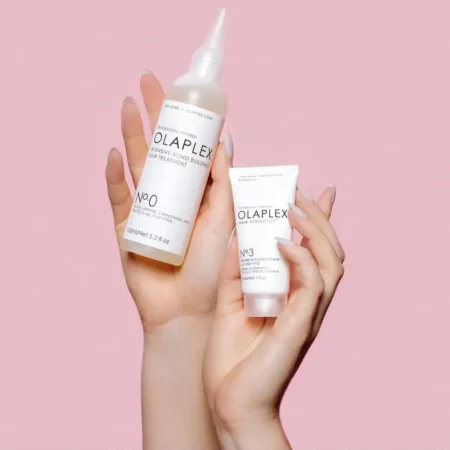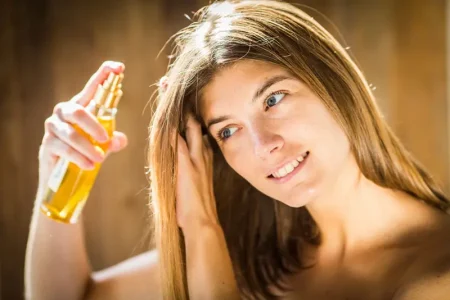Hair thinning is one of those things you don’t really think about—until it starts happening to you. You’re washing your hair, and suddenly, there’s more than a few strands in the drain. Or maybe you’re noticing your part looking wider, or your ponytail feels a little smaller. It can be a bit of a shock, and naturally, you start wondering what’s going on and, most importantly, what you can do about it.
The reality is, hair thinning happens to a lot of us, and it’s not just about aging. There are so many factors at play: genetics, stress, hormonal shifts, diet, and even the products you use every day. The good news? There are tons of ways to tackle it. With the right mix of treatments, lifestyle changes, and maybe a little extra care, you can make a big difference in the thickness and health of your hair.
In this guide, we’re going to dive deep into all the effective treatments for hair thinning, from the science-backed solutions you’ll find at the drugstore to more advanced options like low-level laser therapy and PRP. Whether you’re just starting to notice some thinning or you’ve been dealing with it for a while, we’ve got you covered. We’ll talk about everything from easy daily habits that support hair growth to powerful treatments that target the root causes of thinning.
Ready to get your confidence (and your hair volume) back? Let’s go!
Table of contents
- Understanding Hair Thinning: Causes and Triggers
- Effective Treatments to Combat Hair Thinning
- 1. Topical Treatments
- 2. Nutritional Supplements for Hair Health
- 3. Prescription Medications for Hair Thinning
- 4. Low-Level Laser Therapy (LLLT): A High-Tech Approach to Thicker Hair
- 5. Platelet-Rich Plasma (PRP) Therapy: Stimulate Growth with Your Own Cells
- 6. Microneedling: Boost Growth with Tiny Needles
- 7. Scalp Treatments and Exfoliation : An Easy, At-Home Solution
- 8. Hair Transplant Surgery : A Permanent Solution for Severe Thinning
- 9. Lifestyle Changes for Fuller Hair
- Conclusion
- FAQ for 9 Ways to Combat Hair Thinning and Regain Volume
Understanding Hair Thinning: Causes and Triggers
Hair thinning can feel overwhelming, but understanding what’s causing it is the first step toward getting back to fuller, healthier hair. Often, hair thinning is driven by a combination of factors – lifestyle, genetics, health, and even daily habits. By breaking down the most common causes, you can better identify what’s going on with your hair and figure out the best plan of action to prevent further thinning. Let’s take a closer look!
1. Genetics and Age
- Genetic predisposition: Hereditary hair thinning, or androgenetic alopecia, is the most common cause of hair loss. This condition is often passed down through families, affecting both men and women.
- Aging: As we age, hair follicles can shrink, and the natural cycle of hair growth slows down, leading to finer and thinner hair over time.
2. Hormonal Changes
- Hormonal imbalances: Changes in hormones can impact hair growth. For example, women may experience hair thinning during menopause, pregnancy, or due to hormonal imbalances like polycystic ovary syndrome (PCOS).
- Thyroid disorders: Both hyperthyroidism and hypothyroidism can affect hair health, leading to thinning or excessive shedding.
3. Stress and Lifestyle Factors
- Stress: High levels of stress can trigger hair loss conditions like telogen effluvium, where hair prematurely enters the shedding phase. This type of hair loss is often temporary but can be distressing.
- Sleep deprivation: Poor sleep affects the body’s natural regenerative processes, including hair growth, which can lead to thinning.
4. Nutritional Deficiencies
- Lack of essential nutrients: Hair requires a variety of vitamins and minerals to stay healthy. Deficiencies in iron, biotin, zinc, vitamin D, and protein can all lead to weaker, thinning hair.
- Crash dieting or restrictive eating: Diets that are low in calories or restrict major food groups can deprive hair of necessary nutrients, leading to temporary thinning.
5. Medical Conditions and Illness
- Autoimmune conditions: Alopecia areata, an autoimmune disorder, causes the immune system to attack hair follicles, leading to patchy hair loss.
- Scalp infections: Fungal infections, such as ringworm, can damage hair follicles and lead to thinning.
- Anemia: Iron deficiency anemia is particularly linked to hair thinning, as iron is crucial for hair growth.
- Certain medications: Drugs for conditions like hypertension, depression, and cancer (especially chemotherapy) can have side effects that impact hair health, leading to thinning.
- Contraceptive pills: Some birth control pills can cause hair thinning in women sensitive to hormonal changes, especially if they contain androgens.
7. Hair Care Practices
- Harsh styling: Frequent use of heat styling tools, chemical treatments, or tight hairstyles can cause physical stress on hair, leading to breakage and thinning.
- Improper washing and brushing: Over-washing or using harsh shampoos can strip hair of its natural oils, while aggressive brushing can cause breakage.
8. Environmental Factors
- Pollution: Environmental pollutants can build up on the scalp, clogging hair follicles and contributing to hair thinning.
- Sun exposure: UV rays can damage the hair shaft, making hair appear thinner and more brittle over time.
Hair thinning often has multiple contributing factors, and addressing it typically requires a holistic approach—one that combines lifestyle changes, proper nutrition, and sometimes targeted treatments.

Effective Treatments to Combat Hair Thinning
To combat hair thinning effectively, it’s often necessary to combine lifestyle changes with targeted treatments. Here are some of the most effective, research-backed options available:
1. Topical Treatments
Topical treatments are applied directly to the scalp to stimulate hair growth and strengthen hair follicles. Here are a few that have shown promising results:
Minoxidil: The Tried-and-True Solution
Minoxidil is a popular topical solution, available over-the-counter, that’s FDA-approved for treating hair thinning. It’s especially effective for genetic hair loss. Minoxidil increases blood flow to hair follicles, helping to extend the growth phase and stimulate regrowth. Over time, this can lead to fuller-looking hair.
- How to Use: Apply Minoxidil directly to the scalp twice daily. While it’s generally safe, results can take about three to six months to show, so patience is key.
- Pros & Cons: Minoxidil is effective for many people, but it requires ongoing use. Some users experience mild side effects like scalp irritation or dryness.
DHT-Blocking Hair Serums
Another key player in the hair-thinning game is DHT (dihydrotestosterone). It’s a hormone that can shrink hair follicles, especially in people with genetic hair loss. DHT-blocking serums help prevent this hormone from affecting your scalp, supporting thicker, healthier hair.
- Popular Ingredients: Look for ingredients like caffeine, saw palmetto, and green tea extract—all of which can help reduce the impact of DHT.
- How to Use: Apply the serum to the scalp and massage gently. These serums are best used daily for consistent results.
- Benefits: DHT blockers are especially useful for those with genetic hair thinning, as they target one of the main culprits behind this type of hair loss.
2. Nutritional Supplements for Hair Health
Supplements can help ensure your body gets the essential nutrients it needs for hair growth. While they might not be a standalone solution, they work well in conjunction with other treatments.
Biotin: The B Vitamin That Boosts Hair Strength
Biotin is one of the most well-known vitamins for hair health, and for a good reason—it supports the production of keratin, which makes up hair.
- Sources: Biotin is found naturally in foods like eggs, nuts, and whole grains, but it’s also available as a supplement.
- Benefits: Biotin strengthens hair and helps prevent breakage, making it an easy addition to a hair-thickening routine.
- Considerations: While biotin is generally safe, check with a doctor if you’re on medications, as it can interfere with certain lab tests.
Collagen for Scalp and Hair Health
Collagen supplements have become popular in recent years, and they’re known for supporting skin, joint, and hair health.
- How It Helps: Collagen provides amino acids that strengthen hair and improve scalp health, which is key for robust hair growth.
- How to Use: You can add a scoop of collagen powder to smoothies or coffee daily. There are also collagen capsules available.
Omega-3 Fatty Acids for Scalp Hydration
Omega-3s, found in fish oil, flaxseed oil, and certain nuts, are excellent for reducing inflammation and supporting scalp health.
- Benefits: Omega-3s can keep your scalp hydrated, which helps reduce hair shedding.
- How to Take: You can take an omega-3 supplement daily or add more fatty fish like salmon to your diet for a natural boost.
3. Prescription Medications for Hair Thinning
If over-the-counter options aren’t delivering the desired results, it might be worth considering prescription treatments, especially for more advanced cases.
Finasteride: Blocking DHT from the Inside Out
Finasteride (Propecia) is an oral prescription medication primarily for men with androgenetic alopecia. It works by reducing DHT levels in the body, which can slow or even reverse hair thinning in some cases. It works by blocking the production of DHT, Finasteride can help stop the hormone from shrinking hair follicles.
- Considerations: While it’s highly effective, Finasteride can have side effects, including reduced libido. Always consult with a healthcare provider to weigh the pros and cons.
- Effectiveness: Finasteride works best for men with genetic hair thinning, though some women may also benefit under a doctor’s guidance.

4. Low-Level Laser Therapy (LLLT): A High-Tech Approach to Thicker Hair
Low-level laser therapy (LLLT) is a non-invasive treatment that uses laser light to stimulate hair follicles. It’s often available in the form of combs, caps, or helmets. LLLT increases blood flow and cellular activity in the scalp, which can encourage hair growth.
- How to Use: Most LLLT devices recommend using them 2-3 times per week for about 15-20 minutes per session. The devices are convenient for home use and are generally easy to incorporate into a routine.
- Effectiveness: Many users see an improvement in hair thickness after several months, although results vary.
5. Platelet-Rich Plasma (PRP) Therapy: Stimulate Growth with Your Own Cells
PRP therapy is an exciting treatment that uses your own blood to stimulate hair growth. It’s usually performed in a dermatologist’s office.A small amount of your blood is drawn, processed to concentrate the platelets, and then injected into your scalp. These platelets release growth factors that can stimulate hair follicles.
- Who It’s For: PRP therapy is ideal for those in the early stages of hair thinning and can be especially helpful if genetic factors are involved.
- Considerations: PRP therapy can be pricey and often requires multiple sessions for best results, but many people see a significant improvement.
6. Microneedling: Boost Growth with Tiny Needles
Microneedling is a cosmetic treatment that involves using tiny needles to create micro-injuries on the scalp. It may sound intense, but it’s quite effective for many people. The tiny injuries from microneedling stimulate the body’s natural healing process, which can increase collagen and elastin production, leading to stronger hair.
- Combination with Topicals: Microneedling can also improve the absorption of topical treatments, like Minoxidil, making them more effective.
- At-Home vs. Professional: Home-use microneedling devices are available, but professional treatments are often more effective and safer.
7. Scalp Treatments and Exfoliation: An Easy, At-Home Solution
Scalp massages might sound simple, but they can make a difference in improving blood circulation to hair follicles, which supports healthy hair growth. Massaging the scalp for 5-10 minutes daily can help increase blood flow to the hair follicles, potentially enhancing growth.
- Using Essential Oils: Add a few drops of rosemary or peppermint essential oil (diluted in a carrier oil) to your massage routine for added hair growth benefits.
8. Hair Transplant Surgery: A Permanent Solution for Severe Thinning
For those experiencing significant hair loss, hair transplant surgery can be a long-term solution.Hair follicles are taken from a thicker part of the scalp (usually the back) and transplanted to thinning areas.
- Techniques: Common methods include Follicular Unit Transplantation (FUT) and Follicular Unit Extraction (FUE), which have become more refined over the years.
- Considerations: Hair transplants require recovery time and are an investment, but the results can be permanent. Consulting with a qualified surgeon can help you determine if it’s the right choice.

9. Lifestyle Changes for Fuller Hair
Lifestyle changes can significantly impact hair health and thickness. Here are some effective adjustments you can make to promote fuller, healthier hair:
Prioritize a Nutrient-Rich Diet
What you eat directly affects your hair’s health. Hair follicles require a variety of vitamins and minerals to grow strong and thick hair, so include these nutrients in your diet:
- Iron: Iron deficiency is linked to hair thinning. Incorporate iron-rich foods like lean meats, spinach, and legumes.
- Protein: Hair is primarily made of keratin, a protein. Ensure you’re consuming enough protein from sources like eggs, fish, and beans.
- Omega-3 Fatty Acids: Found in fatty fish, walnuts, and flaxseeds, omega-3s reduce inflammation and support scalp health.
- Biotin and B Vitamins: B vitamins, especially biotin, are crucial for hair growth and strength. Eggs, nuts, and whole grains are good sources.
- Vitamin D: Low levels of vitamin D have been linked to hair thinning. Try to get some sunlight each day, or consider a supplement if needed.
Manage Stress Levels
Stress is a common cause of hair thinning, as it can push hair follicles into a resting phase, leading to more shedding. Here are a few ways to manage stress effectively:
- Exercise regularly: Physical activity releases endorphins, which help combat stress.
- Practice mindfulness: Techniques like meditation and deep breathing can reduce anxiety and improve mental well-being.
- Prioritize sleep: Good sleep is crucial for overall health, including hair health. Aim for at least 7-8 hours per night.
Be Gentle with Your Hair Care Routine
How you handle your hair on a daily basis matters. A few small adjustments can help prevent breakage and protect hair health:
- Limit heat styling: Excessive heat can weaken and thin hair strands. When using heat tools, use a heat protectant spray and keep the temperature on the lower side.
- Avoid tight hairstyles: Styles like tight ponytails or braids can cause traction alopecia, a form of hair loss from pulling on the hair shaft. Opt for looser styles.
- Choose gentle hair products: Look for sulfate-free shampoos, as they are less likely to strip natural oils from your hair, helping to maintain moisture and strength.
- Limit Chemical Treatments: Frequent coloring, perming, or chemical straightening can weaken hair and lead to breakage. If you use these treatments, give your hair time to recover between sessions, and consider deep conditioning treatments to help restore moisture and strength.
Protect Your Hair from Environmental Damage
Environmental factors like pollution and UV rays can damage hair, making it appear thinner and weaker. Consider these protective habits:
- Wear a hat or scarf: Covering your hair can shield it from direct sunlight and pollution.
- Rinse hair after exposure to pollution: After spending time in areas with high pollution, rinse your hair with clean water to remove particles and buildup.
Conclusion
Tackling hair thinning can feel overwhelming, but with the right approach, fuller, healthier hair is within reach. The key is consistency and a bit of patience. By combining targeted treatments—like Minoxidil, DHT-blocking serums, and maybe even some high-tech options like PRP or LLLT—with nourishing lifestyle habits, you’re giving your hair the best possible chance to thrive.
Think of it as a holistic routine: nourish from the inside with the right nutrients, boost from the outside with effective treatments, and handle your hair with care every day. Small changes can lead to big results over time, so keep up with these practices and give each one the time it needs to work.
Remember, hair growth is a journey. Celebrate the little wins along the way, whether it’s less shedding, stronger strands, or a boost in thickness. Stick with it, stay positive, and trust that each step you take is moving you closer to the fuller, more vibrant hair you’re after. Here’s to giving your hair the love and care it deserves!
FAQ for 9 Ways to Combat Hair Thinning and Regain Volume
1. How long does it take to see results from hair growth treatments?
Results can vary depending on the treatment and your individual hair growth cycle. For most topical treatments like Minoxidil, you may start noticing changes in three to six months, but full results can take up to a year. Consistency is key, so stick with your chosen routine and give it time to work.
2. Can diet really make a difference in hair thickness?
Absolutely! Hair is made up of proteins and relies on a steady supply of nutrients to grow strong and thick. Eating a balanced diet rich in iron, protein, biotin, and omega-3 fatty acids supports healthy hair growth from within. While diet alone may not be a cure, it’s an essential part of a holistic approach to fuller hair.
3. Are there any side effects of using Minoxidil or Finasteride?
Some people experience mild side effects from Minoxidil, such as scalp dryness or irritation. Finasteride, which is taken orally, can have side effects such as decreased libido or mood changes. If you notice any side effects, consult with your healthcare provider to weigh the benefits and find the best solution for you.
4. Can I combine different treatments for faster results?
Yes, combining treatments can be very effective, especially if you’re using compatible options like Minoxidil with DHT-blocking serums, supplements, or scalp massages. However, if you’re considering adding prescription treatments or advanced therapies like PRP, it’s best to consult with a dermatologist to ensure your regimen is safe and effective.
For more insights on achieving fuller hair, explore our related articles on “3 Easy Ways to Get Voluminous Hair at Home” and “10 Natural Remedies for Hair Loss: Tips for Fuller, Healthier Hair.” If you’re interested in learning more about how low-level laser therapy works, visit WebMD and Healthline for a deep dive into this innovative treatment.












